
Anasyrma composed of ἀνά ana "up, against, back", and σύρμα syrma "skirt"; plural: anasyrmata (ἀνασύρματα), also called anasyrmos (ἀνασυρμός), is the gesture of lifting the skirt or kilt. It is used in connection with certain religious rituals, eroticism, and lewd jokes. The term is used in describing corresponding works of art.
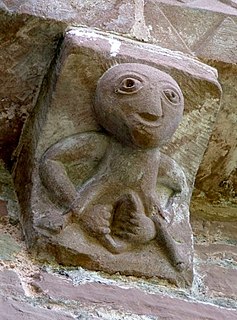
Sheela na gigs are figurative carvings of naked women displaying an exaggerated vulva. They are architectural grotesques found throughout most of Europe on cathedrals, castles, and other buildings. The greatest concentrations can be found in Ireland, Great Britain, France and Spain, sometimes together with male figures. Ireland has the greatest number of surviving sheela na gig carvings; Joanne McMahon and Jack Roberts cite 101 examples in Ireland and 45 examples in Britain. One of the best examples may be found in the Round Tower at Rattoo, in County Kerry, Ireland. There is a replica of the Round Tower sheela na gig in the County Museum in Tralee town. Another well-known example may be seen at Kilpeck in Herefordshire, England.

Shanballymore is a small village in north County Cork, Ireland. It neighbours the towns of Doneraile, Kildorrery and Castletownroche, and is off the main route from Mallow to Mitchelstown. Shanballymore is part of the Cork East Dáil constituency.
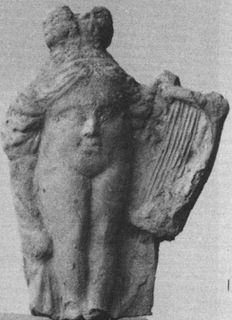
Baubo is an old woman in Greek mythology which appears particularly in the myths of the early Orphic religion. Known as the goddess of mirth, she is depicted as bawdy and sexually liberated, and is said to have jested with Demeter when that god was mourning the loss of her daughter, Persephone.

Boa Island is an island near the north shore of Lower Lough Erne in County Fermanagh, Northern Ireland. It is 25 km (16 mi) from Enniskillen town.

Dilukai are wooden figures of young women carved over the doorways of chiefs' houses (bai) in the Palauan archipelago. They are typically shown with legs splayed, revealing a large, black, triangular pubic area with the hands resting on the thighs. These female figures protect the villagers' health and crops and ward off evil spirits. They were traditionally carved by ritual specialists according to strict rules, which, if broken, would result in the deaths of the carver and the chief. Female figures presenting their vulva can be found in many cultures: they symbolize fertility, (spiritual) rebirth, and they protect from evil.
Kiltinan Castle is a castle near Fethard, County Tipperary, Ireland.

The Vénus de Quinipily is an ancient statue of uncertain origins, located southeast of Baud, Morbihan, Brittany, in north–western France. It is approximately 2.2 metres (7.2 ft) in height and carved from granite. The statue represents a naked woman and stands in front of a fountain on a 2.75 m high granite pedestal. The large basin beneath the statue is also carved out of a single granite block. It is believed that the statue may be of Greek, Roman or Egyptian origin. There is similar uncertainty about its subject; it may be a Celtic deity, the Roman Mother goddess Cybele, or an Egyptian Isis statue.
HMS Shelanagig was a sloop of 16-guns purchased in the West Indies in 1780 for the Royal Navy. She was under the command of James Shepherd,, and her Second Lieutenant was Home Popham.
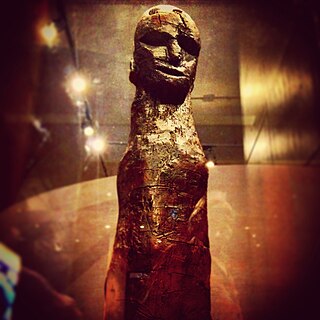
Ralaghan Man is an anthropomorphic, carved wooden figure found in the bog of Ralaghan, County Cavan, Ireland, which dates from the late bronze age. As of 2016, it was held in the collection of the National Museum of Ireland.

Roscommon County Museum is a museum dedicated to the history of County Roscommon, and is run by the County Roscommon Historical and Archaeological Society. The museum is housed in a former Presbyterian church in Roscommon town.

The vagina and vulva have been depicted from prehistory onwards. Visual art forms representing the female genitals encompass two-dimensional and three-dimensional. As long ago as 35,000 years ago, people sculpted Venus figurines that exaggerated the abdomen, hips, breasts, thighs, or vulva. There have long been folklore traditions, such as the vagina loquens and the vagina dentata.
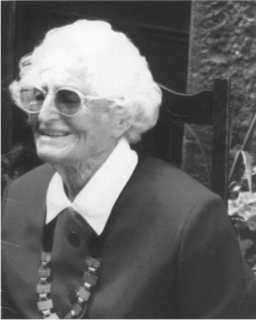
Margaret Phelan was President of the Kilkenny Archaeological Society, given freedom of the city of Kilkenny and ensured the restoration of Rothe House in Kilkenny. She was also the first Ladies president of the Kilkenny Golf Club.
Ballylarkin Church, also called Ballylarkin Abbey, is a medieval church and National Monument in County Kilkenny, Ireland.

Clomantagh Castle is a 15th-century tower house located near Freshford, County Kilkenny, in Ireland. Originally constructed in the 1430s, additional buildings and outbuildings were added in the subsequent centuries - including a connected 19th century farmhouse. Carvings on the castle's walls include a Sheela na gig relief.

Castlemagner is a village and townland in the Duhallow area of north-west County Cork, Ireland. Castlemagner is within the Cork North-West.
Ellen M. Prendergast was Ireland's first female professional archaeologist.

The Liathmore Sheela-na-gig is part of the northern doorway at the larger church ruin at Liathmore monastic site in the townland of Leigh, Co. Tipperary. Its Sites and Monuments Record no. is TN042-055004.
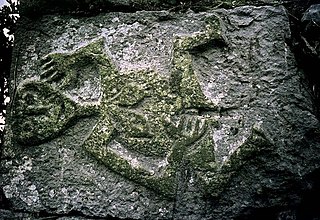
The Kiltinan Church sheela-na-gig is a carved depiction of a nude woman exposing her vulva which used to be part of Kiltinan Church ruin near Fethard, County Tipperary as a quoin stone in the Southwestern corner of the church. However, it was stolen in 1990 and has not been located since. Fethard Historical Society had issued a Wanted poster to help with the retrieval, but to no avail. The National Sites and Monuments no. is TS070-101003.

The Fethard Abbey Sheela-na-gig is located in a wall on the grounds of the former Augustinian Abbey in Fethard. Its National Sites and Monuments number is TS070-040030. One of its earliest mentions is in the School Collection which also includes a black and white photograph.

















